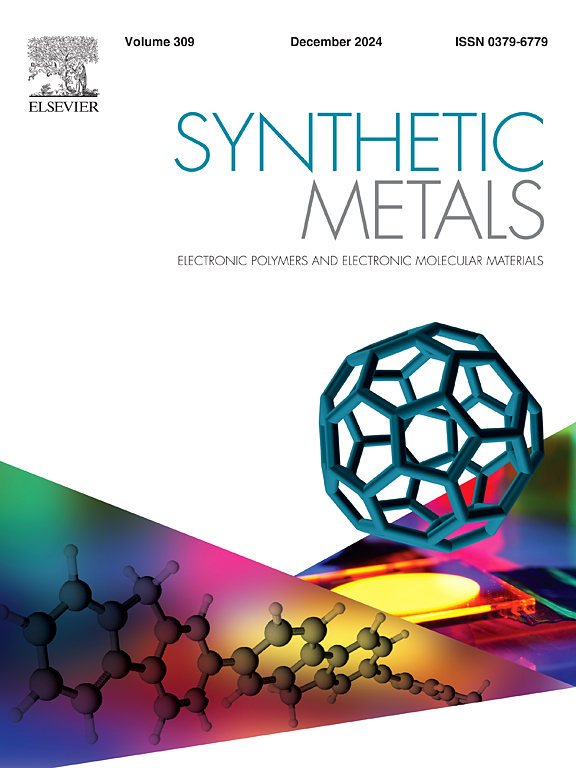Investigation of the formation and selective behavior of thienyl pyridazine electropolymers
IF 4
3区 材料科学
Q2 MATERIALS SCIENCE, MULTIDISCIPLINARY
引用次数: 0
Abstract
Thin-film electrode materials that are selectively redox active as a function of potential are of interest in a number of industries – particularly as sensors or in energy applications. Here we present such a material synthesized from the electropolymerization of a thienyl pyridazine compound, 1,4-di(thiophen-2-yl)-2H-cyclopenta[d]pyridazine, on a platinum disk electrode from acetonitrile solution. The thienyl pyridazine electropolymer functionalized electrode loses its ability to reversibly oxidize decamethylferrocene, while retaining quasi-reversible oxidation of both ferrocene and acetylferrocene, attributed to their more positive redox potentials. In addition, the thienyl pyridazine electropolymer formed through successive cyclic voltammetric cycles is shown to be comparable to that formed by the method of prolonged applied 1.0 V bias. Electrochemical impedance spectroscopy (EIS) is used in situ to help infer kinetic and mechanistic information of thienyl pyridazine film formation. Finally, it is shown that electropolymerization can be sterically hindered by the presence of a perfluoropyridine group on the thienyl pyridazine monomer at the nitrogen position, showing that electropolymerization can be significantly impacted by changes to the pyridazine center of the monomer.
求助全文
约1分钟内获得全文
求助全文
来源期刊

Synthetic Metals
工程技术-材料科学:综合
CiteScore
8.30
自引率
4.50%
发文量
189
审稿时长
33 days
期刊介绍:
This journal is an international medium for the rapid publication of original research papers, short communications and subject reviews dealing with research on and applications of electronic polymers and electronic molecular materials including novel carbon architectures. These functional materials have the properties of metals, semiconductors or magnets and are distinguishable from elemental and alloy/binary metals, semiconductors and magnets.
 求助内容:
求助内容: 应助结果提醒方式:
应助结果提醒方式:


